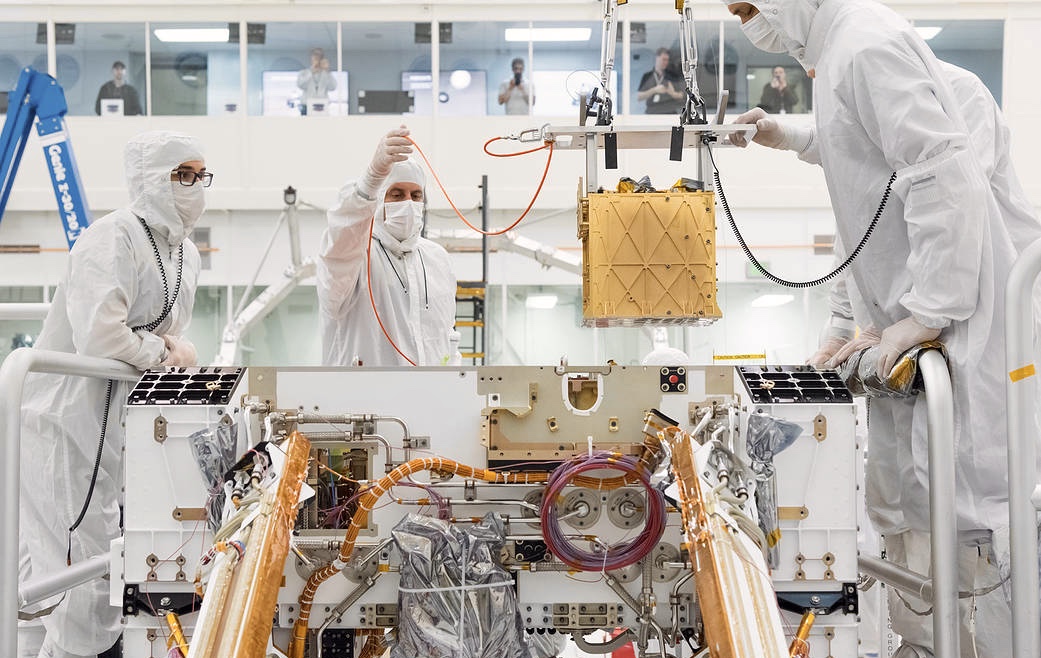As we live our lives, overcoming obstacles, setting our own goals, and interacting with the people that our networks are composed of, it can often be forgotten that our social circle, our city, our country, and even our planet are so miniscule in the grand scheme of things.
The universe as a whole is so massive and infinite that our minds will likely never even be able to imagine it. What we can imagine, and even experiment with, however, are some of the planets near us in the solar system. And this is exactly what scientists have been recently working on in regards to the red planet itself, Mars.
The brilliant minds at the California Institute of Technology, commonly known as CalTech, have developed a device that extracts oxygen from carbon dioxide (CO2) inspired by comets. The uses of such an apparatus range from interplanetary missions to even reducing greenhouse gases in our atmosphere.
The researchers set up an experiment during which they accelerated carbon dioxide molecules and had them collide with a surface of gold foil. Gold, as an element in the chemistry sense, is inert, meaning it is unreactive.
In theory, when the CO2 molecule would be fired at the gold foil, the carbon would separate from the two oxygen molecules, yielding atomic carbon and molecular oxygen. As it turns out, the experiment was successful and may have many uses down the road.
“This seems like a very promising source of oxygen, especially with regards to Mars which contains 95 per cent CO2 in its atmosphere. It’s truly revolutionary that they were able to find a method of extracting oxygen from CO2, definitely something researching further to aid in our exploration endeavours,” says third-year computer science student Adrian Angara.
NASA is already experimenting with a device called MOXIE (Mars Oxygen In-Situ Resource Utilization Experiment) that converts carbon dioxide into oxygen through a process known as electrolysis. As of right now, the device is about the size of a car battery, as it is only experimental at this point.
MOXIE would aid in allowing astronauts to make roundtrip voyages to Mars. Oxygen is a huge component in fuel, and without it, blasting a rocket off from the planet would not be possible.
“All you have to do to convince yourself of that is to look at a rocket as it launches from Earth. There’s an enormous oxygen tank to lift up a little tiny capsule on top.”
“All you have to do to convince yourself of that is to look at a rocket as it launches from Earth. There’s an enormous oxygen tank to lift up a little tiny capsule on top,” said Dr. Michael Hecht of NASA’s Mars Exploration Program, who is also in charge of MOXIE.
MOXIE’s compressor works by taking in nearby carbon dioxide and distributing it to the electrolysis unit inside of it that works at an Earth-like pressure. At that point, a chemical catalyst recorded at 800 degrees Celsius tears oxygen atoms from each incoming CO2. Oxygen atoms are then paired rapidly to form diatomic oxygen, which makes its way out as carbon monoxide.
According to engineers, there are a couple of concerns. Firstly, MOXIE cycles on and off repeatedly to share battery power with other technologies. All of the starting and stopping that the machine must go through has been shown to be rough on the system, and perhaps lead to degradation over time.
Another concern is the massive temperature swings that it will be experiencing on Mars. Mars can experience daily highs of 70 degrees Celsius and lows of -90 degrees Celsius due to its extremely thin atmosphere. This variation in temperature could be difficult for MOXIE to cope with.
Projecting for the future, third-year space engineering student Umer Anandukumar had some imaginative thoughts to share on where these developments may lead us.
“I think it’ll be a massive milestone for the scientific community if we’re actually able to implement this technology. The potential impacts I see down the line are that the general public would probably be less hesitant to travel to Mars,” says Anandukumar.
NASA deployed MOXIE on the rover Perseverance in July of this year, and it is set to land in February 2021. Though MOXIE still has ways to go in its development, it seems like a great step in our venture of space exploration.


